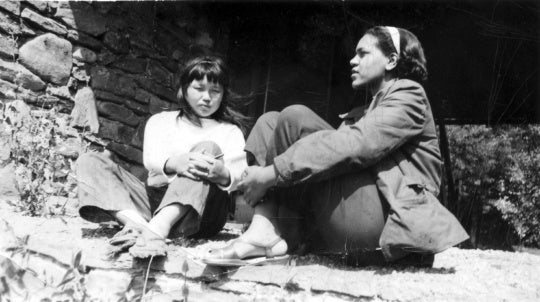
Works of contemporary art rarely come with instruction manuals, though many viewers would probably benefit from just such a set of directions. By adopting the phrase, “open this end” as its title, this timely and thoughtful exhibition seems to be offering an entry point to the contemporary art of the past five decades. But the invitation is purely ironic. There is no one clear route to navigate through this show, which instead offers multiple ways of reading and interpreting the art of our time.
Pop art, conceptual art, the Pictures Generation and identity politics—all these movements are covered succinctly through a mere 77 works by 37 artists. They are culled from the collection of Los Angeles businessman Blake Byrne, who has amassed over 1,200 art works since he began collecting in the 1960s. Generally, museums steer clear of exhibitions of works from a single private collection, because they tend to legitimize and boost the value of what is essentially market activity. But in this case, many of the works on view have already been promised to the Los Angeles Museum of Contemporary Art and the Nasher, Byrne’s alma mater. In the hands of New York curator Joseph Wolin, what might have been an exercise in self-aggrandizement has become a fascinating exploration of recent trends in contemporary art featuring some of the best works by the featured artists.

The best way to approach this exhibition is not chronologically, though that is one way that the show is organized. Instead, pick a more idiosyncratic vein to mine, such as text-based works starting with Andy Warhol’s 1962 Open This End, the earliest work in the exhibition, for which the show is named. From there, you can trace a route from Ed Ruscha’s 1973 drawing The Briefcase to Glenn Ligon’s 2011 Study for Negro Sunshine II, #11. Or go in an entirely other direction, and examine conceptual art projects, from Vito Acconci’s documentation of a 1970 performance (where he stepped on and off a stool until he was exhausted) to Felix Gonzales-Torres’s 1993 Untitled (Last Light), a string of bare lightbulbs that will eventually burn out, one by one, a reference to a more permanent state of exhaustion.

Before leaping to the conclusion that this is a too-cool collection of artworks, it should be noted that South African artist Marlene Dumas is well represented here with a large group of paintings, including The Pilgrim, 2006, an eviscerating portrait of Osama bin Laden. Equally haunting is David Hammons’s 1992 sepia-print photograph of a makeshift basketball court, titled Money Tree, and Thomas Houseago’s sculpture Squatting Man, 2005. But a highpoint has to be the collection of Bad Boys—Mike Kelley, Paul McCarthy, Martin Kippenberger—whose works nearly steal the show. Kelley’s Silver Ball, 1994, is a massive accumulation of tin foil wired to four boom-boxes. McCarthy’s series of Masks, photographs of rubber Halloween masks, soiled and smeared and desecrated, are simultaneously mesmerizing and repulsive. Not to be outdone by her male colleagues, however, Cindy Sherman contributes a 1999 photograph of a melted doll, definitely not for the squeamish.

Blake Byrne did not set out to put together an encyclopedic collection of contemporary art, and so many of his choices are idiosyncratic. This is not just a list of greatest hits. Yet, in inviting us into his collection, he gives us an opportunity to reconsider more standardized histories of contemporary art and freely associate connections of our own making. The show will travel to three other universities where it will surely be a great tool for teaching the next generation of art historians about contemporary art. It is wonderful to think that they may learn that there is not a single linear route through this material, that the only comprehensive approach is multidimensional.
“Open This End: Contemporary Art from the Collection of Blake Byrne” is on view at the Nasher Museum of Art at Duke University, Durham, North Carolina, through July 12.
Barbara Pollack is a New York-based critic and curator, whose survey of contemporary Chinese art, “My Generation,” was on view at the Tampa Museum of Art and the St. Petersburg Museum of Fine Arts from June 7 to September 28, 2014.
[Featured image: Glenn Ligon, <i>Warm Broad Glow</i>, 2005; neon and paint, 4 by 48 inches.]




